Industries are driven by innovation, so it was a little frustrating to see only a few new software products in Anaheim and Frankfurt this year. Although the plug-in community has been a source of innovation in the software community, the innovative energy has slowed a bit in the last couple of years. There are lots of reasons: Necessary shifts to focus on hardware products, increased support costs of existing products, lack of retail support, to name a few, but it shouldn't be a lack of great ideas.
Marcus Ryle has been intimately involved in more industry changing products than anyone I can think of. In fact I have personally used more products that Marcus has been involved with than other individual in MI, and that's the best compliment you can give to a product developer.
I first met him at an 80s NAMM Show where he was demonstrating the Oberheim Xpander, a very cool synth (pre-rack) module that he had helped design and bring to market. He was obviously a smart guy who took talking to a customer seriously. After Oberheim he with his colleague Michel Doidic started Fast Forward Designs, whose product credits included the Alesis ADAT, HR-16, and QuadraVerb, and the Digidesign SampleCell. All were innovative, game-changing, and successful. Currently he is the Chief Strategy Officer of Line6, a company he also founded with Michel Doidic.
Did you start in music as a musician like so many others in our industry, and then discover you had this talent for building products?
Music was my first love, for as long as I can remember. I played piano originally, and I had an early love for technology. I saved up and bought a used ARP Odyssey when I was twelve years old and just started taking things apart. I would buy someone's used and broken gear, fix it, and sell it for a little more money in order to afford the next piece of gear I wanted. In LA there was the Recycler, a classified ad newspaper that would come out every Thursday, and you'd look and see what musical instruments people were trying to get rid of. This was way before eBay.
What are some of the ones that you remember?
I remember getting an old Kustom tuck and roll head and cabinet.
I got a Telecaster Custom that was wired in stereo. The stereo wasn't working right. I don't know how many they made where they had split the pickups to separate left and right, or if it was something that had been customized. I wish I'd kept that...
Was Oberheim the first company you worked for?
Yes, I met Tom Oberheim by chance when I was 19 years old. I was, at that time, at Cal State University, Dominguez Hills.
Engineering?
Not exactly. I actually left high school as soon as I turned 16, with dreams of a music career. But not surprisingly, my parents expected me to continue my education in some way. My mom had heard that the university had put in a new studio, and convinced me I should check it out. CSU Dominguez Hills had just completed a new Humanities and Fine Arts building and there was a music department professor, Richard Bunger, who was smart enough to realize that with a state university about the only time you get funding is when you're building a new building. He thought it'd be really great to have an electronic music lab and recording studio, so he got funding for a bunch of gear: Two full panels of E-mu modular, probably four ARP 2600s, and a 3M M56 two inch 16-track tape recorder.
So I walked in at 16 years old to Dominguez Hills and I knew I'd found home. And to my good fortune, even though they had the gear, they really didn't have much curriculum yet or enough people to teach.
I started teaching labs because I knew how to use the gear. By that time, I had my own ARP 2600 (I had traded up from my ARP Odyssey) and had been recording on a Teac 3340, so I was able to jump right in. My time was split between teaching, taking classes I was interested in like electronics, physics, and programming, and recording my music projects after hours. Near the end of my second year there I managed to get the school one of the only original Synclaviers on the west coast. This was in 1979.
Those were pretty expensive at the time….
New England Digital's original Synclavier had sold for $15,000. I was able to get it for $12,000, because I promised them I would go show it to Herbie Hancock. I called him up out of the Music Union directory and said I've got a synthesizer to show you, and he said to come on up to the house. The first Synclavier was a 16-voice, 2-operator FM synth, before Yamaha's DX-7 introduced FM to the market..
I was teaching students the Synclavier in a class called Advanced Synthesis. I had convinced New England Digital to give me the source code so I could teach the students how to write their own wavetables and algorithms and sequencers. It was basically a mini computer with 8-inch floppies running simple 8-bit, 256 byte tables—wave tables—for the sine waves to generate the FM.
The Able Computer….
That's right, Able. It was their own computer. I hooked up a Soroc terminal to the serial port at 300 baud so you could type in your own code and compile it. Tom Oberheim had heard there was a Synclavier at the school and he was curious to see this new-fangled digital synth. So he came down and that's when I got a chance to meet him and show him the stuff I was doing. Next thing I know, he offered me a job. I wasn't looking for a job, and up until that point I had figured I'd either be a rock star or a recording engineer.
Who were your models for rock stars and recording engineers?
My hero was Keith Emerson, and I would have been happy to follow in his path. As far as recording engineers, Cal State Dominguez Hills would get people like Al Schmitt to come down and do a guest lecture and talk about recording. He was a legend back then, and is still making great records today. We'd also go visit Capitol Records and be in awe of the staff engineers. There was a lot of exposure to the LA recording scene, so that was pretty exciting.
When had you learned to program?
My dad was an early computer pioneer and he brought home an Apple II computer pretty much as soon as it came out. I started programming it, making it do bleeps and bloops from a pretty young age. I started out with Basic, and then learned PDP-11 assembly language and a version of PL/M called XPL, which is what the Able computer used.
So you did come from a computer background….
Yes, that's right. But what Tom Oberheim I think recognized was that for many companies it can be a real challenge to bridge the gap between the technical team and the marketing or customer-facing team. He saw that I was someone who was a musician first and passionate about technology and products, but also understood the technical stuff. So I didn't really have much of a job description, but he said he wanted me to be the guy "inbetween" the engineers at Oberheim (which were Tom and Jim Cooper when I started) and the sales and marketing group (run by Russ Jones at that time), because exactly what a customer wants can often get lost in translation.
So your first product for Oberheim was…?
The OB-Xa was in development already, so I was able to have a little influence on that. I was able to throw in a handful of software features and performance features in the modulation area.
What were some of those performance contributions?
Being able to do simple things like hold the split button and set the key where your split would start, holding the upper and lower buttons to transpose either independently, because maybe you wanted to do two right hand parts. Setting up the modulation box, which ended up being a little convoluted, to make it so you could do Pitchbend just on your right hand, not necessarily the left hand. Honestly not big deal things, but it was kind of the beginning of practical problem solving for me. It was just what I would want as a musician, so they let me put these things in.
And the DSX Sequencer came after that?
Yes, they had put a computer interface on the OB-XA, which was a full-on parallel bus that you allowed DMA control right to the processor in the synthesizer through a 37-pin connector. All of the address lines and the data lines of the Z80 (processor) were right there, hanging out for the outside world to see, and the notion was that they wanted to make some kind of sequencer to connect to it so they just asked me if I wanted to design it. And not knowing any better, I just said "sure".
What model did you start with?
I still have my original drawings. One of the reasons I think Tom thought this might be interesting is that I had already written a very simple sequencer on the Apple II, just a simple way to put in notes and create patterns. And I was familiar with the Synclavier's built in sequencer, but although it was multi track, it was pretty rudimentary in that you could just record and play back. You couldn't do anything else with it, like edit. There was no time base, at all. It would just capture what you played and play it back.
I had started noodling with writing a more sophisticated sequencer for the Synclavier since I had the source code. So that was the starting point. Tom gave me carte blanche so I just started drawing it up; here's a panel, etc. I think it was the first sequencer to take timing, or real time use, and allow you to quantize individual tracks. I don't think there was quantizing for music before then, although Roger Linn had already introduced the concept in his LM-2 drum machine.
Well that was an innovation right there.
I think it was the first one that was loop based as well. I had the notion there were sequences and there were songs. So you could do a sequence, and maybe it was just four bars long, and you could do several of those, and you could then connect them together in songs, since they were all quantized and time based, you could do that. And then each step of the song you could transpose or do things like that, and actually a lot of those same concepts carried forward to the MMT-8, which was the first product I did for Alesis when we started Fast Forward Designs.
And that evolved from you saying; "this is what I want."
As a kid I played with analog sequencers, which were inherently quantized. You had a controllable pitch and you had a clock, and that's what it was. With some sequencers you could numerically key in step-sequenced time, but why shouldn't you be able to just play the part that you want, and tell it to be quantized to a particular rhythmic value? And it's not necessarily to correct someone's poor performance, but there are times when you want to have something that is perfectly metric. And by having a metronome, a time base, in the sequencer… actually I don't think there were any sequencers with a musical time base before that either… so the sequencer could give you a click, you could play four bars or sixteen bars or whatever, and be able to quantize it after the fact.
From my perspective, the individual note quantized into the same exact bar
Well yes, that was crucial not only for that but also because I wanted it to be able to synchronize with a drum machine, since that capability really didn't exist before then as well. So you needed to be able to have the exact same clock reference for the drum machine as the sequencer, and have sequence lengths be at exact bar multiples so that the sequencer and drum machine would loop together. The Oberheim DMX drum machine was being worked on at the same time as the DSX, so I worked on the clocking and synchronization system for both so that you could just hit play on one machine and they'd stay locked.
What's your biggest business challenge today?
I think one of the challenges for innovators today is the good and bad of the Internet. What I mean by that is that the Internet has created for some people a false sense of expertise due to the seemingly limitless access to information. But information is not the same thing as knowledge, and building knowledge usually requires experience. The Internet doesn't replace experience, yet for some people just having access to information makes them think that they know everything. I don't mean that in a pejorative way. They feel very well informed and as a result, are less inclined to be inquisitive about what they may not know about the products, information and technology.
There are many people now who think that they're a doctor because when they get a symptom, they can just go online and look it up and they know what's wrong with them. And yes, it's a fantastic resource, but that doesn't replace thirty years of experience that a doctor might have in noticing some nuance or detail that may be critical. In the earlier days when we would innovate in our industry, you would have knowledgeable people at a music store where musicians would go to learn about technology, like West LA Music (RIP). That's the first real music store that I went to as a kid. I remember a sales guy at West LA Music, seeing me looking at an ARP Odyssey synth and he took the time to teach me about it in detail. Today, I find that with new innovations there may be great awareness that some company makes a plugin or someone has a new product, and if you ask if someone has heard of this XYZ? And people will say "sure, I know about that". But chances are, they may not know what makes that innovation unique and how it might advance their musicianship or give them new skills. And some of that deeper inquisitiveness about innovation seems to be a little less prevalent today.
In the early '80s there were fewer products in our field and fewer presets on the products so you had to actually learn how the products worked to get the most out of them
Right. There was a time when a company would come out with a new innovation and people would want to learn everything about that, in order to see what it could do for them.
Let's take StageScape for example. Is that an attempt to make it so intuitive by inscribing pictures so that you can make up for the decentralized knowledge?
That's a good example. It seems to me that technology should be used as a tool to enable musicians so that they can focus on music, because that's really where they create. It's a shame to see a band perform live, especially since live music is now the most important vehicle to get yourself exposed, and hear how bad many bands sound live, because they are forced to be responsible for their own sound. Their technical audio engineering abilities may not be able to go much beyond being able to plug things into an analog mixer and get sound to come out.
And even for those musicians who are very experienced with engineering, if you have to focus on how to get things to sound good, you're not focusing on your performance. It's the left-brain, right brain conflict that you deal with. At home in your studio, it's relatively easy to spend the next two hours editing something, being very left brain, doing something analytical or working on a particular sound, and then to shift gears and go right brained to create new music. That's why so musicians just open up Garage Band when they want to just capture a song idea and then later they'll go play with ProTools, because that'll be a different experience. It'll be left brain versus right brain. So we wanted to solve those problems in a unique way.
How do you keep yourself fresh, like where you were when you started at Oberheim?
Well, I still regularly use all of the gear. That's important, and that's the reason for getting into design in the first place. But also, we do a lot of outreach - advisory groups, surveys, focus groups and other ways of talking to customers. The Internet's also a very valuable tool for staying current.
But for something as significant a new direction as StageScape, you start with a hypothesis that has to resonate authentically as something that's a real need. Then you talk to musicians to validate it. We ended up talking to a lot of musicians and bands, asking, "When you perform, what gets in your way? Let's walk through the whole process. What's hard and what do you wish was easier?"
And what we discovered was that the goal of great live sound was really only just a dream for many musicians. There were also problems with feedback and problems with distortion. There were problems with not knowing how to make a monitor work well. These were really prevalent, and we realized that we really needed to solve these all of these problems as well as create a great live sound experience.
So StageScape is the first mixer where you never have to worry about clipping your mic preamps. What does that have to do with making music, right? If you tell the StageScape, "This is my lead vocal" it's going to set the input trim automatically where you'd put it for a lead vocal mic. And then if it turns out in the middle of a gig that your lead vocalist is just a massive screamer, and it actually would clip the front end, it's going to automatically turn down the analog trim and digitally make up the gain so you don't hear any level change and the distortion just goes away. The musicians just get to stay focused on the performance, while StageScape makes sure that you don't have to deal with correcting distortion in the middle of your set.
And feedback, …feedback suppression is really important, and it can be somewhat expensive and complicated for people to use at a gig. And typically you end up putting it at the end of your entire signal chain. So, if there's feedback, you're going to notch everything out of everything in your music at that frequency. Instead, we put 12-band feedback suppression at each individual mic input, and it's intelligent enough to know that I'm not going to look for feedback on your keyboard channel. I'm not going to look for feedback on a direct instrument or on your turntable. But I know this is a vocal mic and I'm watching for feedback and I'm going to notch it out.
So that's an example of an intersection between a customer need, no feedback, and technology, a 12-band feedback suppressor. So how do you mesh those two?
That's a good question. We try to do a lot of stuff "real world." Obviously you can have as many bands of feedback suppression as you want, but you're going to trade off DSP power that you might want for other things. So we set up a microphone in a PA environment and you start seeing that if someone is abusing this a bit, if they turn it up too much or are too near a speaker, how many frequencies can occur before you get to a point where the signals are really too loud. In fact, at that point the StageScape will just turn the microphone down, because that's the best solution you have at some point, if you literally just stick the microphone in the speaker and leave it there. You still want the feedback to stop. So it's kind of a point of diminishing returns that we've discovered, to have feedback frequencies beyond 12. In fact, 12 might be overkill, but it works pretty well.
I'm wired in a way where I see opportunities. It feels like every product I use, whether it's the remote control for my TV or my cell phone or driving the car, or a vending machine, anything outside of music, I'm immediately drawn to where it could be improved. Why did it take three steps to do this function? Here's a way that maybe that could be done with one. Or why does it cost so much to solve this problem? For music products, it's what leads to questions like "Why shouldn't everyone be able to have a digital tape recorder at home?"
Well, that's a great answer
And so if you're drawn in that way, focused on solving problems, then what happens is you just want to fix them… obviously my love is for music and audio, so I only concern myself with the problems I see there. I don't go and try to design a new TV remote. But then secondly, you end up looking for this great convergence where technology could really solve a problem in a great way.
Are there any particular problems out there that you saw and decided not to solve?
There are a lot of ideas that get discarded, and it's usually for one of two reasons. One would be that it is in a different enough area that we know that to be successful with it will involve a much larger investment that just solving the technical problem. It could require more marketing, or just more time. But even with this hurdle, we do still sometimes pursue it if we think it is an important enough advancement for musicians. As an example right now, as we've entered live sound, we believe we've made the best-in-class speakers that are also the most innovative in this new approach to live sound, but most of our customers think of Line 6 as a guitar products company. We've always seen ourselves as a technology and technical solutions company, but they see us as a guitar company. So it feels a little odd for them potentially. It's like if Mercedes made an airplane, that might be a little strange at first. Our StageSource speakers are an example where we've decided it's worth the time for the market to get familiar with us in a new area, but with some other product ideas we decide that it isn't.
The other reason would be that there are times when ideas are technologically too ambitious right now. There's always risk in innovation. And to solve some problems well can involve a huge investment, so you only make those huge investment bets once in a while. We did it with guitar products and we're doing it now with wireless and live sound. You have to be selective.
What's your most memorable product development, and why?
I guess I'll pick three. The DSX for Oberheim, my very first one, was memorable because I was 19 years old and it was my first "real" product. I was trying to design a sequencer and I was naïve enough to think I could just do it. I got so excited about dreaming up what I wanted it to do, I wrote up a whole specification, made some pencil drawings, and got completely caught up in all of the things that I wanted it to do without giving much thought to how I was going to do it.
But then I had to go and do it somehow. I'd never programmed in Z80 assembly before. I'd just read a book. I'd never done microprocessor design other than one class I'd taken. I just started working on it, and we got the hardware together, but I was having trouble with the software. This was before we had any emulators and there was no debugging. You wrote your code and cross-assembled it on a mini computer, burned it into an EPROM and plugged it into your hardware, and you saw if it worked. And if it didn't work, you had to go back and look at your code and figure out why. So you single-stepped by hand, meaning you'd take a piece of paper and write down what you think is in every register and you'd step through your code writing down what would happen. And it just got really, really hard to debug, and I remember being at a crossroads where I was thinking "I don't know if I can do this." Maybe I'd bitten off more than I can chew. And when you're a kid, you sometimes wonder if you can finish anything significant. So it was a real test for me.
What got you over the hump?
Maybe it was fear. I felt I only had two choices: I was either going to have to quit with my tail between my legs and run away, or I was just going to have to persevere. And I just somehow managed to work through it. I think tenacity and perseverance is crucial to any level of success.
I got great help, too. Tom wasn't the software guy, but obviously I learned a lot from Tom. Jim Cooper had taught himself software and had written all of the Z80 code for the OB-X and OB-Xa. So I had learned some looking at his code, and I'm sure there were more people helping me.
But my recollection was that I was feeling pretty alone at that moment. But it really taught me something powerful because every project I've ever been involved in has had that moment, and I'm sure you've experienced it too, where you go, "Uh oh," because some problem has come up at the eleventh hour. There's some timing issue, or some code problem, or you run out of memory, or something has happened where you go, "We've hit a snag and we've got to figure out how to solve it." And I always remember getting through that first one, and that's really helped me get through every one since.
So that's the first one, the DSX
In the mid-period, I have to say the ADAT. The ADAT, at that time, was the most technologically ambitious project I was involved in, and clearly it was not a single-handed venture. I was involved in defining it, for starters. So drawing up the front panel, the notion of connecting multiple units, sync and optical, and you know, the system aspect. And then I worked on the audio coding scheme, working with Keith Barr and Alan Zak from Alesis on how we were going to do everything from error correction to dealing with the interleave of data to what tape speed and track width, because all of this was being designed from scratch. And then we designed three and a half of the four custom chips that were in it. On the Fast Forward Designs side, Michel Doidic and Carol Hatzinger were key development partners too.
Were you guys working with anyone from the tape industry?
No one. But Keith Barr was truly brilliant. I'd had some experience, but I certainly didn't have Keith's bravado. And Keith had the tenacity to say, "We're going to design a digital tape recorder." Keith had done a lot of research into tape machines and we had a lot of discussions on how densely we thought we could pack data on the tape and still have it be reliable. How are we going to interleave tracks so we can punch in and out on a rotary head machine and not put your other tracks in jeopardy? But there wasn't any tape expert. There was a great three-volume book titled Magnetic Recording [by C. Denis Mee & Eric D. Daniel] that Keith had found, and we all read all three volumes of it.
Okay, and number three?
Number three would probably be our first guitar amp, the AxSys 212. That's what led to our first patent for Line 6, because it was really the first modeling guitar amplifier. And it became even more memorable and exciting in hindsight because of how that really set things in motion for us, to get to where we are today.
Maybe I need more than three… it's hard not to include the Quadraverb, or POD, or Variax, or StageScape… they're all quite memorable, and special. And with any luck, I hope to be able to keep adding to the list for a while to come.
So, to anybody that's thinking about starting a new company and making a new product, take a look at all the things around you and think about how to make them better.
So, to anybody that's thinking about starting a new company and making a new product, take and look at all the things around you and think about how to make them better.

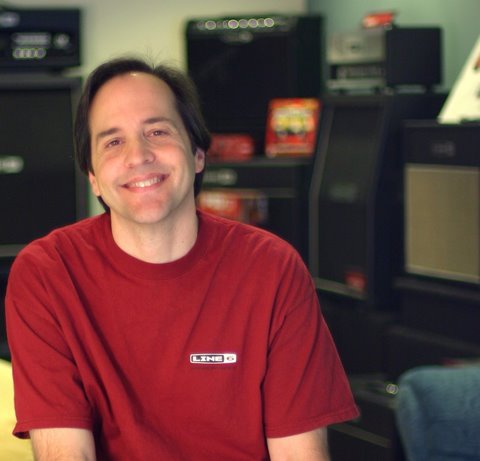

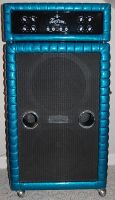
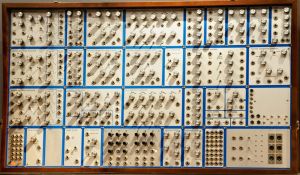
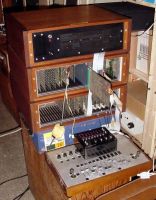
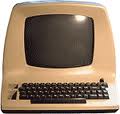
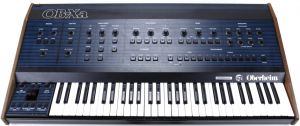
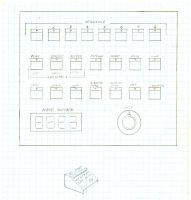
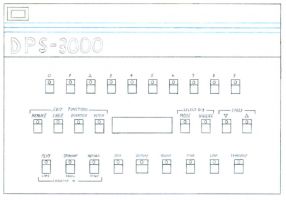
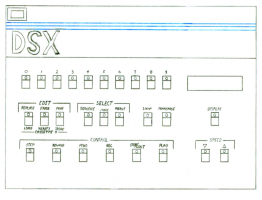
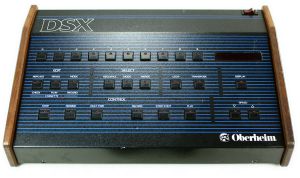
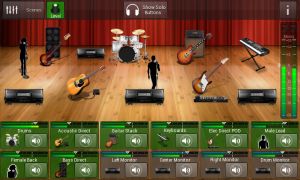
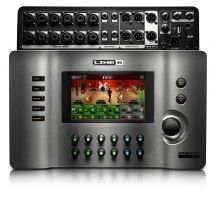
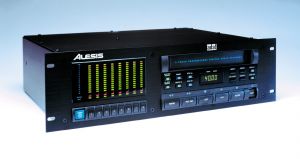
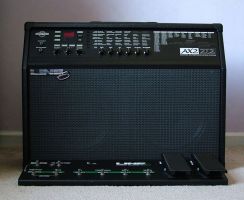
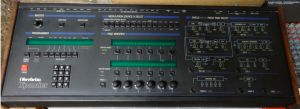

 Other Related News
Other Related News










